
Final Fantasy VII Rebirth Review
"This is a homecoming."
This phrase is thrown around a lot in the back half of Final Fantasy VII Rebirth. Though the line itself has a specific context, the reference to "homecoming" leaves me thinking about how much the concept of "home" runs through the second installment of Square Enix’s multi-year attempt to revisit Final Fantasy VII, arguably one of its most beloved and influential games.
Final Fantasy VII Rebirth’s focus on home and homecoming makes for an interesting contrast to the previous game, 2020’s Final Fantasy VII Remake. Remake was situated entirely in the massive Mako-powered city of Midgar. But few, if any, of the key characters in the game truly call Midgar their home.
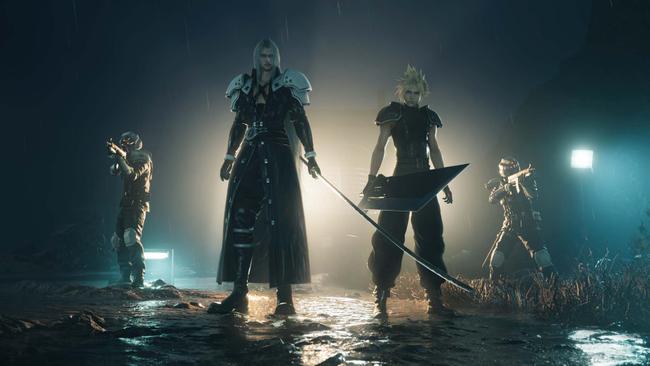
Protagonist Cloud and his childhood friend Tifa spent their younger years in the sleepy hamlet of Nibelheim, which was razed to the ground by the former hero Sephiroth in an incident one can explore in great detail via the Final Fantasy VII Rebirth playable demo. Barret, the gun-arm toting eco-warrior, is estranged from his own home, an impoverished mining town in the drier, dustier parts of the vast Corel region, while Cait Sith, the fortune-telling cat-robot, joins the party from Corel’s glitziest attraction, the Gold Saucer amusement park. Red XIII, the talking leonine former test subject making his debut as a playable party member in Rebirth, hails from the mysterious settlement of Cosmo Canyon. Even Yuffie, whose native land of Wutai is so far away it doesn’t even feature in the game (at least, not in this game), is motivated by her desire to protect her home, and is given bleak reminders of the threat it faces as a new war with Shinra looms.
All throughout Final Fantasy VII Rebirth, characters return to their homes, lose their homes, regain their homes, and find new homes. Some even despair at the realization that the planet they live on may never be their home.
Playing Final Fantasy VII Rebirth reminds me of home as well. More specifically, it reminds me of the very home I’m living in right now, which happens to be the same home I played the original Final Fantasy VII in more than 25 years ago, using pirated discs on a borrowed PlayStation. Rebirth surrounds me with images, names, and terms I first experienced as a child. But at the same time, Rebirth is full of reminders that it’s not the same game I played decades ago. Just as I, and the home I’m sitting in, are not the same as we were back at the time of the original game’s release.
For one, Final Fantasy VII Rebirth is far more than the "remake" originally implied by its predecessor. If the events of Final Fantasy VII Remake hinted that things won’t quite turn out as they did decades ago, Rebirth’s narrative practically makes this explicit. For reasons I won’t spoil, Rebirth confirms that it’s as much a sequel to as a revision of the original game.
Don’t get me wrong: Things do move more or less as they did in the original, narratively. The party begins its journey in Kalm, on the outskirts of Midgar. Cloud recounts what happened in Nibelheim years ago, and why they must now track down Sephiroth - wherever he’s gone - to stop him from doing…whatever it is he has planned. The characters go through these motions and arrive in similar places to where they’re supposed to be, but how they get there, and what they’re feeling when they get there, is where the changes lie. The narrative is permeated by a vague sense that there is aught amiss, a knowledge that something’s wrong, but not what, exactly, is wrong, or why. In such circumstances, the only course of action left is to play things by ear, pursuing their goals as they were once destined to.
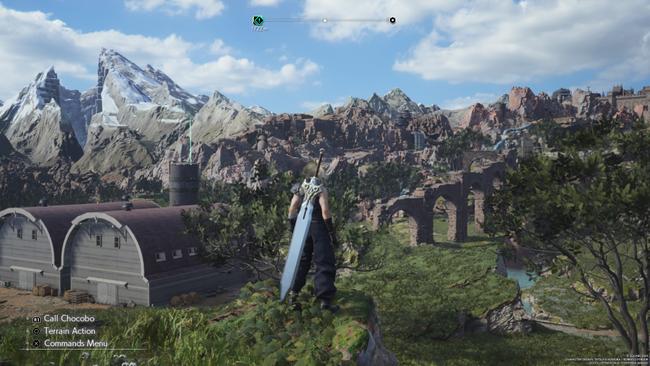
The goal at hand is to follow Sephiroth’s trail, just like before. But instead of following rumors of a man in a black coat, this time around, the party follows a trail of Black Robes: Enigmatic, zombie-like individuals dressed in ragged cloaks, bearing some connection to Sephiroth himself, and seemingly able to close in on his eventual position like tragic, humanoid homing pigeons.
That’s actually it, in as far as Rebirth has an overarching plot structure. In a macro sense, all Cloud and the party do for the whole game is follow the Black Robes around the world, eventually to Sephiroth, for the eighty to a hundred hours it’ll take to accomplish a thorough first playthrough. This lack of a strong narrative throughline isn’t Rebirth’s fault, to be fair: The original game had that problem, too. Only back then, this sense of aimlessness wasn’t as obvious and passed more quickly, due to the game’s linear flow. Now, it’s that much more apparent when stretched out over six massive open-world regional maps and dozens of side quests and activities.
All the most important plot movements in the story so far feel like they either happened before the party left Midgar in Remake, or are being saved for whatever game is coming after Rebirth. The plot developments that do get added to Rebirth to try to wrinkle the story a bit more don’t quite paper over these cracks, leaving one with the distinct sense that Cloud is spinning his wheels more than the desert buggy he drives through Corel.
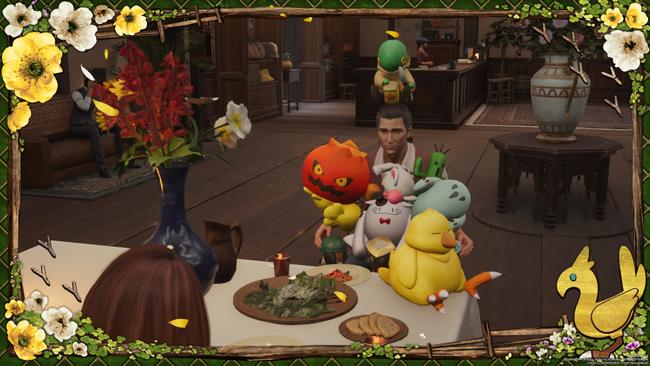
And yet, it all works out, because of how well the development team has been able to weave strong character-focused moments and expertly crafted fan service into every layer of the game. I don’t think I’ve ever played an RPG where every character in the core party felt as consistently "present" in the circumstances as they do in Final Fantasy VII Rebirth.
As Cloud walks through each of the game’s zones, the whole party follows, not just the active combat team. Even in combat, the "backline" members lend some token aid (like Barret shooting a few bullets into a fight from a distance). Thus, everyone’s in a position to comment or contribute when something interesting happens. It’s a brilliant decision on the part of the team, because it removes the worry that you might miss out on some choice banter just because you prefer different members in a fight.
To wit: I remember once regretting my class choice in 2018’s Dragon Age Inquisition because my personal class preference for combat (a Knight-Enchanter) meant that my "optimized" party members weren’t my favorite characters, leading me to sacrifice hanging out with my besties on the altar of victory in battle.. Rebirth’s approach to party member presence preemptively solves that issue, and drives home how well the team has managed characterization in-game.
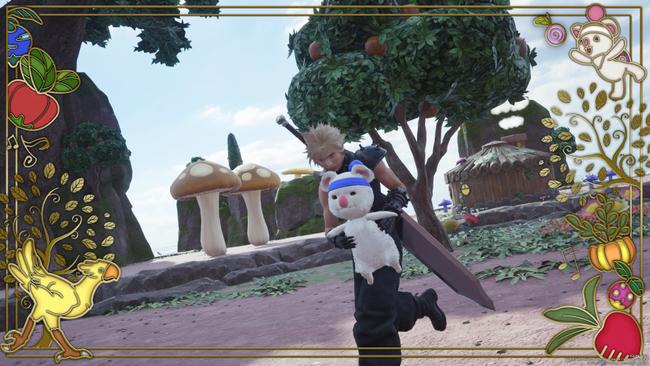
This is further enhanced by Final Fantasy VII Rebirth’s signature addition to combat: Synergy. While the core mechanics of Remake’s hybrid action-RPG combat system are intact for Rebirth, Synergy adds a welcome complication that underlines the game’s focus on intraparty dynamics.
Every character has an array of Synergy Skills and Synergy Abilities. Synergy Skills can be called on at any time, so long as a compatible party member is present. Skills range from a powerful charged slash to a "bodyguard" mode where a party member’s "partner" intercepts incoming damage and adds their attacks to the controlled member’s.
Meanwhile, Synergy Abilities are effectively on-demand Limit Breaks that are powered by points gained using abilities in a given fight. Synergy Abilities also have a variety of effects, from granting temporary infinite MP to unlocking access to higher-level Limit Breaks. The animations for the Synergy Abilities ooze with personality, playing off the party’s relationships with each other. This even has a literal effect in Cloud’s case, as activating a Synergy Skill or Ability for the first time provides a boost to Cloud’s bond with that character. The core party in Rebirth may not always come across as tenderly as the boys in Final Fantasy XV do, but Rebirth’s grasp of characterization across its group, and its ability to underline this sense in combat itself, is unassailable.
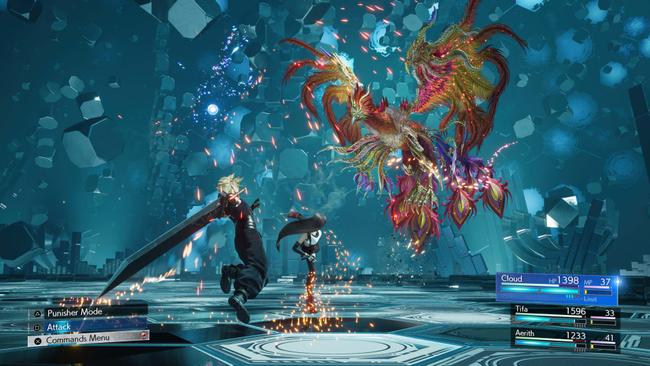
That combat is supported by a revamped approach to character progression. While Rebirth’s Materia and equipment system is largely identical to Remake’s, the manner in which characters improve for combat has seen significant change. Most of the perks and bonuses previously earned through weapon upgrading have been folded into Rebirth’s signature progression system, Folios. Powered by SP points earned from completing quests, Folios are reminiscent of the Final Fantasy X sphere grid: Players can spend earned SP to unlock nodes that themselves apply various permanent bonuses. The bonuses include statistical boosts, but they also unlock new Synergy Skills, Synergy Abilities, and a key new set of commands - free elemental jolts.
Thanks to the Folio system and the nodes within it, characters can now be specced out to have access to a series of elemental attacks that cost no MP and need no Materia to be used. These attacks don’t do much damage, but they’re available for when an enemy can be pressured or staggered by tickling its elemental weakness. The addition of these abilities frees up a lot of Materia slots that would’ve been used to ensure a character can attack enemy elements. Rebirth’s refinements to character progression allow for a much greater variety of builds and Materia setups, now that not every character needs to be packing one of each elemental spell Materia.
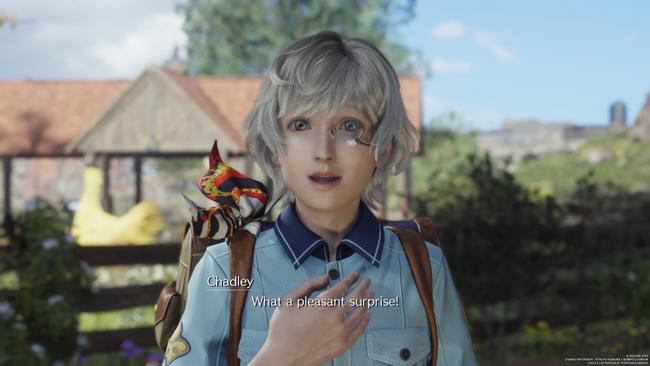
And there are more exotic Materia in Rebirth than before. Many are earned out in the world through "intel gathering." Rebirth’s open world activities are managed by Chadley, who returns from Remake not just as the arbiter of the combat simulator, but the purveyor of new Materia and the ubiquitous manager of all of Final Fantasy Rebirth’s "World Intel." Cloud and crew will gather intel for Chadley via his custom tool, the CHAD Module. Six of the game’s seven playable regions are packed with a distinct set of activities indicated by map icons.
The activities themselves have little variation: You’ll fight unique enemies, climb towers to populate the map, undertake a surprisingly involved world-spanning questline in search of "Protorelics", scan Lifesprings for local historical information, scan temples to the local Summon to improve their materia, and excavate ruins for new recipes to use in Rebirth’s crafting system, Item Transmutation. Chadley’s Combat Simulator also returns, bringing rewarding battles and some of the best-designed encounters in the game: The fights to unlock various Summons, including Kujata, Phoenix, Odin, and Bahamut Arisen.
Though somewhat lacking in variety, this to-do list for each region still manages to weave in character moments, not just for the party, but the world. Regional info-dumps flesh out some of the backstory behind Shinra’s rise into a corporate superpower. Fiend hunts test the party’s combat prowess, and the unique fiend varieties featured are introduced with a voiced intro courtesy of Chadley’s peppy new assistant, Girl Chadley MAI. World Intel deepens the player’s understanding of Final Fantasy VII’s world.
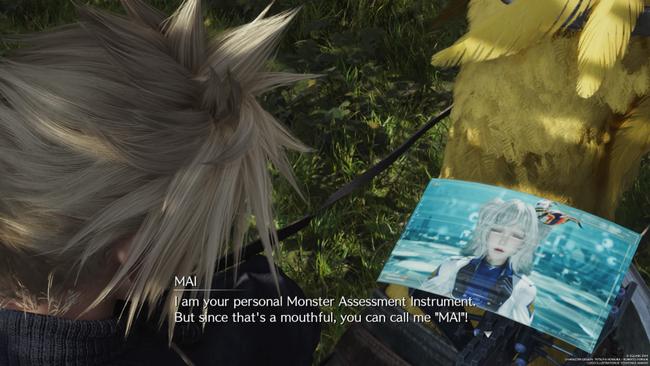
Meanwhile the game’s many side quests deepen Cloud’s relationship with his party as much or more than the core plot. All the game’s side quests involve the party, often with one or more members being Cloud’s key companion for the duration. In aggregate, it gives off the impression that the whole group is participating in an adventure together, rather than this being "The Story of Cloud Strife and his Six or Seven Friends." The sense of camaraderie and relationships that built up over the course of this very long game was so vivid for me that I wanted to revise the old truism "Even bad games are fun when you’re playing with friends," to "Even somewhat tedious open-world busywork is cozy when you’re handling it with Barret, Tifa, Aerith, Red, Yuffie, and Cait Sith."
Speaking of relationships, those bonds are also affected by the many choices Cloud’s given in interacting with his buddies. On multiple occasions, players can deepen Cloud’s relationship with the party through dialog choices, side quest completion, and even minigame performance.

Minigame performance is also a surprisingly prevalent aspect of Final Fantasy VII Rebirth. There are a mind-blowing amount of minigames in Rebirth. Players can race in a Chocobo Racing minigame that feels better to play than Square Enix’s own kart racer Chocobo GP. They can bust heads in a Punch-Out-like 3D Brawler featuring characters rendered in the old low-polycount PS1 style. They can play a version of Remake’s motorcycle chases, this time rendered as a score-attack arcade game. They can play wonderful piano arrangements of key Final Fantasy VII musical themes. And of course, there’s Queen’s Blood, a brilliantly designed card game based on territorial capture, and the best full-fledged RPG minigame since Final Fantasy VIII introduced Triple Triad. In an era where seemingly every big-enough RPG develops its own collectible card game to spin off, Queen’s Blood is the one I’m actually most interested in playing separately from its host game.
But even beyond these "formal" minigames, Rebirth’s many side quests and map activities are bursting with one-off, customized interactions. There’s so much one almost wonders if it’s too much. Do we truly need a minigame for picking mushrooms that’s only used for one side quest?
The answer to that question is "Of course, we do."
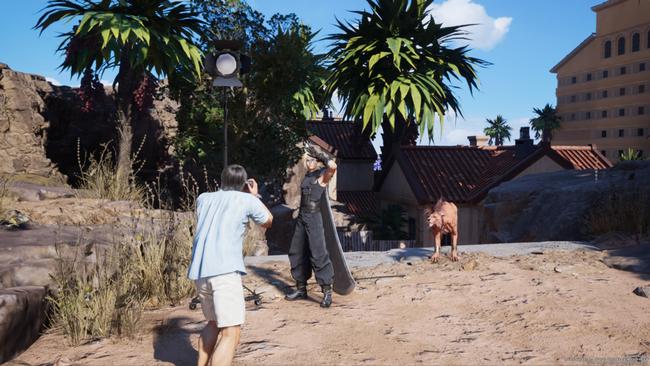
The ubiquity of minigames in Final Fantasy VII Rebirth speaks to an older sense of game design, where having a lot of resources to spend on production meant making a ton of bespoke actions or seemingly superfluous, yet beautiful mechanics. If Rebirth’s icon-festooned open world map is the sign of a very modern approach to so-called "triple-A" game design, its love of minigames and focus on character feels like a holdover from earlier, more indulgent times, before genres and risk-taking calcified into a set of well-trodden best practices and demands for "polish."
Backing this all is an all-time soundtrack. After Remake featured so many brilliant rearrangements of iconic themes, I didn’t think Rebirth would be able to top it, but the sheer sense of luxury, or doing something "just because it’s cool" permeates Rebirth’s musical selection as much as it does the rest of the game.. Just about every activity seems to be set to a distinct banger of a track. There’s even a specific, unique musical accompaniment that’s only (only!) used when Cloud and the party are following a very good dog about his business. That that track even has a battle variant speaks to how endearingly indulgent the game’s music can be.
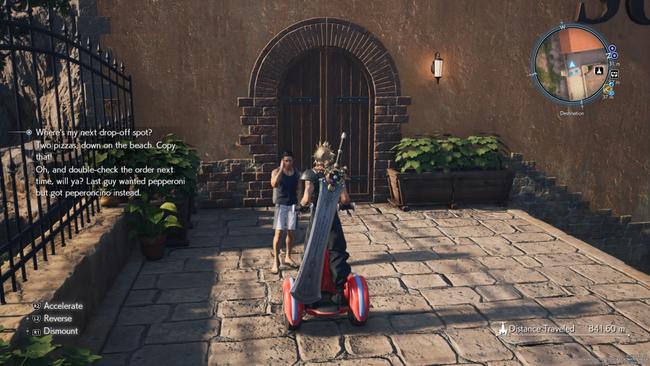
But for as engrossing as Final Fantasy VII Rebirth can be for most of the many hours I spent playing it, I wasn’t without my own complaints. While the game integrates its open world activities well, navigation can leave something to be desired. The in-game map and compass are simply not up to the task of guiding a player through its more complex terrain layouts - looking at you, Gongaga! A few menu loads and animations can chug or hitch visibly, particularly when I use the game’s high-resolution "Graphics" setting. The sound mix can seem off in spots, too, with the music often drowning out the dialog unless you adjust the volume tracks yourself.
Some combat encounters don’t feel entirely well-tuned, either, with some fights having objectives or complications that actively work against the design of the battle system. And while the elemental tickler abilities help characters target weaknesses without resorting to spells, some characters don’t seem fully equipped to tackle things like flying enemies (especially since characters no longer automatically fly up to aerial foes the way they did in Remake). For all the game has done to ensure that every character feels viable and distinct, seeming oversights like this limit the game’s team composition possibilities.
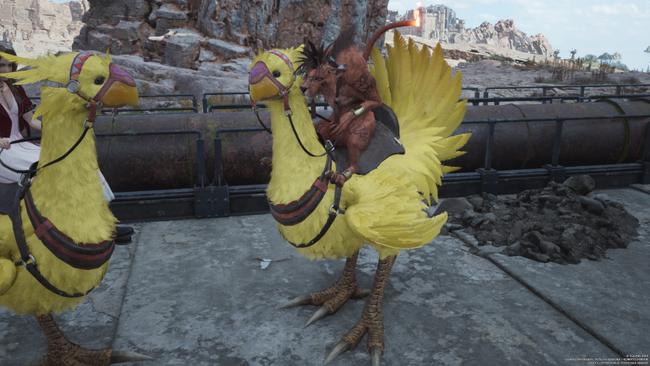
On the convenience front, I also found myself wishing for saveable "loadouts" that I could use to swap between specific Materia and Equipment selections, seeing as different party members can have different builds. After all, the Barret I take into a Cloud-Tifa-Barret combat team won’t be the same Barret that I’d use for a Cloud-Yuffie-Barret team.
Nitpicks and minor annoyances aside, Final Fantasy VII Rebirth is a grand expansion of the sense of possibility birthed by Final Fantasy VII Remake. Not only does it builds on that earlier promise of Remake as a narrative grappling with Final Fantasy VII's greater impact, but as a game it is a singular, lovingly-crafted synthesis of design philosophies both past and present, augmenting modern scale with a deep and long-lived appreciation for its characters. I can’t wait to see what they’re planning next.
Final Fantasy VII Rebirth launches on PlayStation 5 on February 29, 2024.